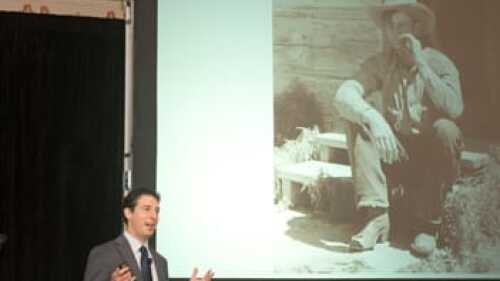Residential
New supply is still far short of demand, say panelists at a Denver conference. Even if developers wanted to overbuild, there’s not enough capital—or taste for risk—available to do it.
Far from being loners, singles in the city are creating connections—and vitality—says Eric Klinenberg, author of Going Solo: The Extraordinary Rise and Surprising Appeal of Living Alone.
With the number of household formations tapering off significantly in the past few years, dismal job growth, tight credit standards, low housing prices (which have yet to rebound in most of the nation), and lots of policy uncertainties, future demand also looks rather dismal, said David Crowe, chief economist for the National Association of Home Builders, at a ULI Terwilliger Center for Housing forum on June 21.
Over the past decade, mixed-income housing has been rising in popularity across the country, with progressive cities providing housing for lower-income residents alongside more affluent ones. "[Traditional] lenders have not yet bought into the concept,” says private developer John Huskey, president of Los Angeles–based Meta Housing Inc., but he hopes traditional lenders will accept this concept, much as they did mixed-use development a decade ago. “We’re demonstrating that you can get market rents alongside affordable housing,” he says.
Museum Place, a large-scale infill development on an 11-acre (4.5 ha) site assembled in the cultural district of Fort Worth, Texas, is designed to knit 11 new structures into a finer-grained urban fabric of streets to connect to nearby museums and surrounding uses so it can flexibly mix offices, retail space, hotel space, and housing.
In China, senior housing is a relatively new concept, and senior housing projects do not take account of the exact needs of this demographic group, said Sun Xiangshu, chairman of Beijing Victory Star Architectural & Civil Engineering Group, to a group at ULI’s Asia Pacific Summit held in Beijing May 16-18. There will be no easy solutions to China’s aging population problem, participants said.
“The attributes of the single-family house are becoming obstacles to aging in place well,” with the distance from shops and services and the lack of walkability, said Ellen Dunham Jones, architecture professor at the Georgia Institute of Technology. “We need to link the needs of the aging population with dead big-box stores and dying malls.”
Telecommuters are an expanding workforce sector with needs different from those of typical workers. Many of these needs could be met by a new type of home-office building. In addition, energy efficiencies and an improved quality of life for telecommuters could be achieved.
Panelists at ULI’s Spring Meeting agreed that strategies never considered before are worth considering now in this market in which renting seems to have more appeal than buying. However, George Casey, chief executive officer at Orleans Homebuilders, noted that Orleans is building fewer models and foot traffic is slower per community, but sales are greater.
Members of ULI’s Community Development Council speak about the impact of the slow economy, the increased appeal of smaller sites in denser locations, consumers’ current amenity preferences, the impact of ethnic and demographic changes, and the rising demand for housing that can accommodate multiple generations.






